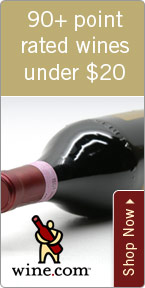For Wine Lists, Variety Is The Spice Of Life

Wednesday - February 11, 2009
| Share
 Del.icio.us
Del.icio.usThis one might bother you. As a wine drinker, how many Cabernet Sauvignons and how many Chardonnays do you think a wine list should have? I’ve put together wine lists and had to ask myself that same question. I wonder because there are so many wine lists here in Hawaii that feature a host of Cabernets and Chardonnays. But how much is enough?
I know that variety is the spice of life, but not all Cabs or Chards are created equal. Even in Napa Valley, there are distinctions between wines grown in Stags Leap District vs. Howell Mountain. Margaux is different from Pauillac, etc. There are plenty of differences in winemaking, grape growing, clones, etc., that make the product of each winery and vintage different from each other. They come in different bottles, labels, points and prices. I also know that Cabernet Sauvignon and Chardonnay are the most-sold red and white wines sold in the U.S. respectively.
So how much do we need? Again, I say variety is the spice of life. Is having so many of one particular wine like having a food menu that offers mostly fish? There are certainly restaurants that specialize. But how about the restaurants that offer a varied selection of items, but still chooses to concentrate on only those two types of wine? Why?
Are Cabernet and Chardonnay the best wines to pair with the food? In most cases, I would say otherwise. I hear wine buyers say, “That’s all my customers know.” Well, if that is what you continually offer them on your wine list, you’re right. Diners will miss out on having fun wines that are not completely dissimilar from what they normally drink.
For red wine drinkers, there are Cabernet Franc from North America and France, Mencia from Spain, Nero d’Avola from Italy and even Grenache from Spain and France that can be just as rich and complex as Cabernet Sauvignon.
I’ve seen Chardonnay drinkers eyes pop open when they taste Marsanne and Roussanne from North America and France, Grenache Blanc from Southern France, Grechetto from Italy and even barrel-aged Gruner Veltliner from Austria and Pinot Gris from Alsace. Many of these wines sell for a fraction of what you might normally spend on Cabernet and Chardonnay.
There is no question of the nobility and greatness that Cabernet Sauvignon and Chardonnay can attain. They certainly make some of the best wines in the world. But it is time for both restaurateurs and consumers to open up to the possibilities that there are other great wines in the world you have yet to taste, not to mention the endless possibilities of matching food with those non-Cabernet and non-Chardonnay wines.
Of course, I’m not saying to eliminate Cabernet and Chardonnay. But why paint a painting with only two colors?
I applaud those of you, both consumer and restaurateur, who are adventurous enough to seek out and drink “different” wines. Without you, the wine world would sink into monotony and boredom. I hope that more find the same fun and challenge in adding spice to life.
Spice it up: 2007 Quenard Chignin Blanc ($14) This is made with the white alpine grape Jacquere. It reminds me of fresh alpine air scented with fruit and herbs. Delightfully refreshing and crisp. 2006 Zisola Nero d’Avola ($25) This thick and juicy red is brimming with blackberry and vanilla spice. It’s a wow wine that Cabernet drinkers are sure to enjoy.
Roberto Viernes is a master sommelier. E-mail .(JavaScript must be enabled to view this email address)E-mail this story | Print this page | Comments (0) | Archive | RSS Comments (0) |
Most Recent Comment(s):












